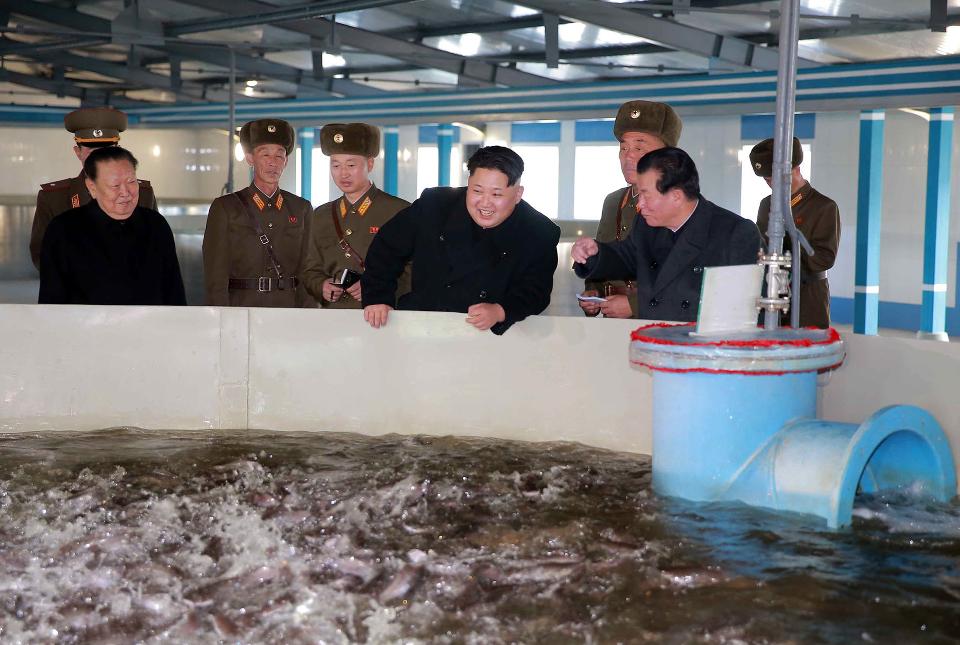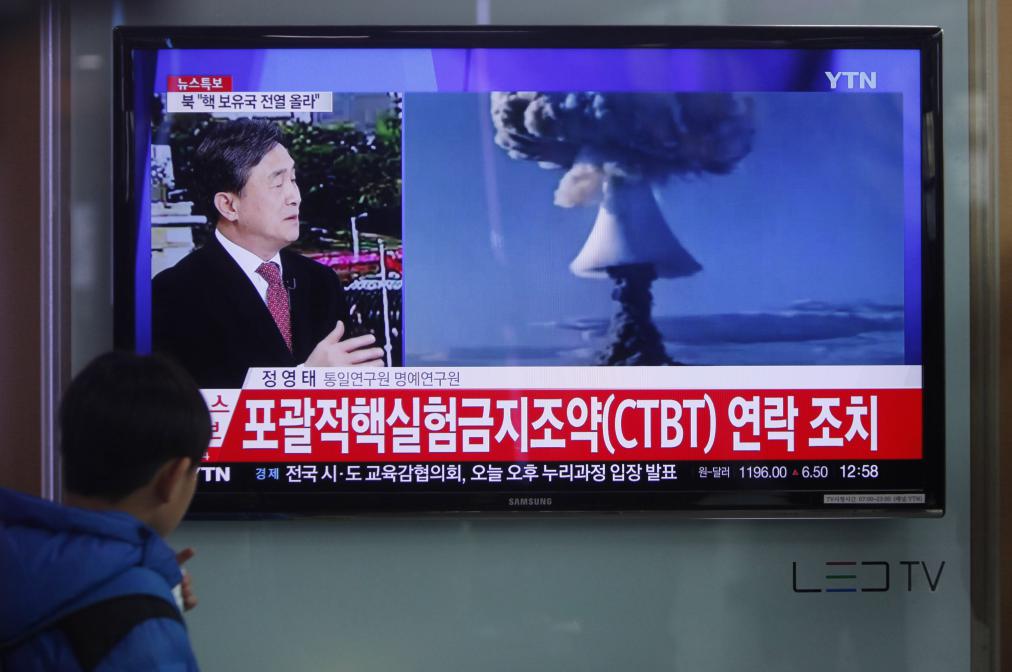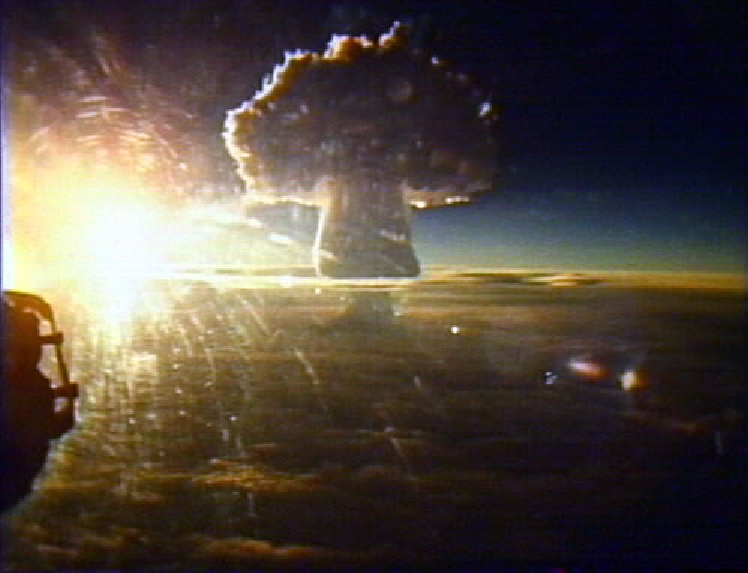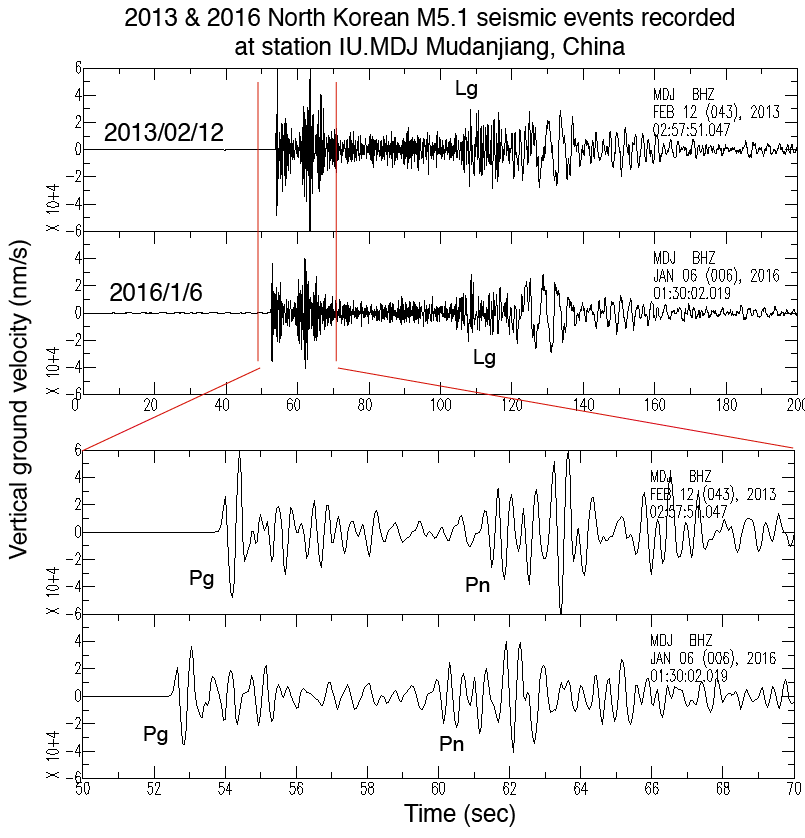Ask Ethan: How do we know that North Korea is bombing?

An undated photo released by the official North Korean news service in December 2015. Kim Jong-un inspects a repaired catfish breeding farm somewhere in North Korea.
The beginning of January 2016 was marked by extremely suspicious seismic activity occurring in the north-eastern region of North Korea, just a few miles from the coast. Moreover, the government’s statement said that they detonated a hydrogen bomb, which they promised to use against any aggressor threatening their country. This has provoked in the [English-speaking] readers circles not only fear and excitement, but also skepticism, which Kathleen Reed expressed in the form of a question:
North Korea claims to test the hydrogen bomb. CNN transmitted images of a mushroom cloud, but I'm not sure that they were obtained in North Korea. How could we make sure that North Korea did indeed conduct tests of nuclear bombs?
')
First, your uncertainty about CNN broadcasts has hit the mark. They are famous for their ... let's say the story of reports on North Korea and the nuclear war with the United States.

CNN frame from April 3, 2013
Indeed, according to CNN, it was said that a hydrogen bomb was detonated in North Korea, and according to CNN, as in many other media, they showed pictures and videos containing a mushroom cloud of a nuclear explosion. Photos and videos are real, they really capture a nuclear explosion. But these were photos not from a test of a bomb in North Korea, but from various archives.

In addition, in North Korea, when testing a bomb, there should have been no cloud. Until this year, the country conducted three tests of nuclear weapons, detonating bombs contrary to the Comprehensive Nuclear-Test-Ban Treaty of 1996 [this treaty is not valid today, since it has not been signed by India, Pakistan and the DPRK, and has not been ratified by the United States - approx. trans.]. The bomb can be blown up, anywhere - in the air, under the water of the sea or ocean, underground. These explosions can be detected, but the energy of the explosion is muffled by the environment through which she has to wade.
• Since the air is less dense, it mutes the sound worst of all. Thunder, volcanic eruptions , rocket launches and nuclear explosions emit not only sound waves heard to our ear, but also infrasound (long wavelength, low frequency), which - in the case of a nuclear explosion - carry so much energy that detectors can detect them all over the world.
• Water is denser, and although sound waves in water move faster than in air, energy dissipates in it with distance faster. However, in the case of an underwater explosion, the energy output will be so great that pressure waves can be easily detected by sonar sensors, which have acquired many countries. In addition, there are no natural processes in the water that could be confused with a nuclear explosion.
• So, if the country needs to hide the fact of the explosion, it is best to hold it underground. And although seismic waves from a nuclear explosion can turn out to be very strong, in nature there is a more powerful method for creating seismic waves: earthquakes! The only way to distinguish between them is to triangulate the exact position, since earthquakes very rarely occur at depths of up to 100 m, while nuclear tests have so far only occurred at a shallow depth. Therefore, the countries that have signed a comprehensive nuclear-test-ban treaty have deployed seismic stations around the world to catch the ongoing nuclear tests.

A seismic event in North Korea has been discovered all over the world. There are 337 seismic stations on Earth that catch such events. According to the US Geological Surveillance Service (USGS), the event was the equivalent of an earthquake of magnitude 5.1, and occurred at a depth of 0.0 km. On this basis, it is possible to reconstruct the amount of released energy - about 10 kilotons - and determine whether there is a high probability that it was a nuclear explosion: and, apparently, the explosion was nuclear.

Unlike previous tests with simple nuclear bombs (based on nuclear fission), North Korea claims that the new bomb is hydrogen using thermonuclear fusion. Thermonuclear bombs are much worse than nuclear ones. The energy of a nuclear bomb on uranium or plutonium is in the range of 2 to 50 kilotons, and the energy of a hydrogen bomb can exceed this value thousands of times. The record holds a nuclear test in the USSR Tsar-bomb with a capacity of 57-58 megatons, held in 1961 [also known as " Kuz'kina mother " - approx. trans.].

Explosion king bomb
Therefore, North Korea most likely detonated an atomic bomb. But was it a nuclear or thermonuclear bomb? Between them there is a big difference:
• The nuclear bomb uses heavy elements with a large number of protons and neutrons, such as uranium or plutonium, and bombards them with neutrons that can be captured by nuclei. And in this case, an unstable isotope appears, decaying into smaller nuclei with the release of energy and additional free neutrons, which leads to a chain reaction. In the case of the correct construction, such a transformation is experienced by a huge number of atoms, turning hundreds of milligrams or a gram of matter into pure energy through E = mc 2
• The thermonuclear bomb uses light elements, such as hydrogen, and, creating gigantic temperatures and pressures, forces them to combine into heavier elements, such as helium, with the release of an even greater amount of energy than a nuclear bomb. This requires such high temperatures and pressures that we have so far invented only one way to obtain them: to surround a ball of fuel intended for synthesis with a nuclear bomb. Only such an output of energy can trigger a nuclear fusion reaction. This scheme can turn up to a kilogram of matter into pure energy.
Judging by the energy output, the tremor in North Korea could not have been caused by a thermonuclear bomb. Otherwise, this would be the most efficient synthesis reaction with the lowest energy ever achieved on the planet, and even theorists are not sure how such low energy could be achieved. On the other hand, we have enough information to confirm that it was a simple nuclear bomb, since the seismic data show a clear similarity between the North Korean nuclear bomb of 2013 and this one.

In other words, all the evidence suggests that a nuclear reaction was used in this test, without any synthesis. I suspect that they still wanted to trigger a thermonuclear reaction. Perhaps there was a second or third stage in which the bomb was supposed to begin helium synthesis, but this did not happen.

However, this explosion was definitely not an earthquake! Earthquakes create very strong S-waves, compared to P-waves, but nuclear tests create significantly stronger P-waves, corresponding to the observations. North Korea did conduct nuclear tests - and we now learned how we know that it was a nuclear, not a thermonuclear reaction.
Source: https://habr.com/ru/post/401175/
All Articles